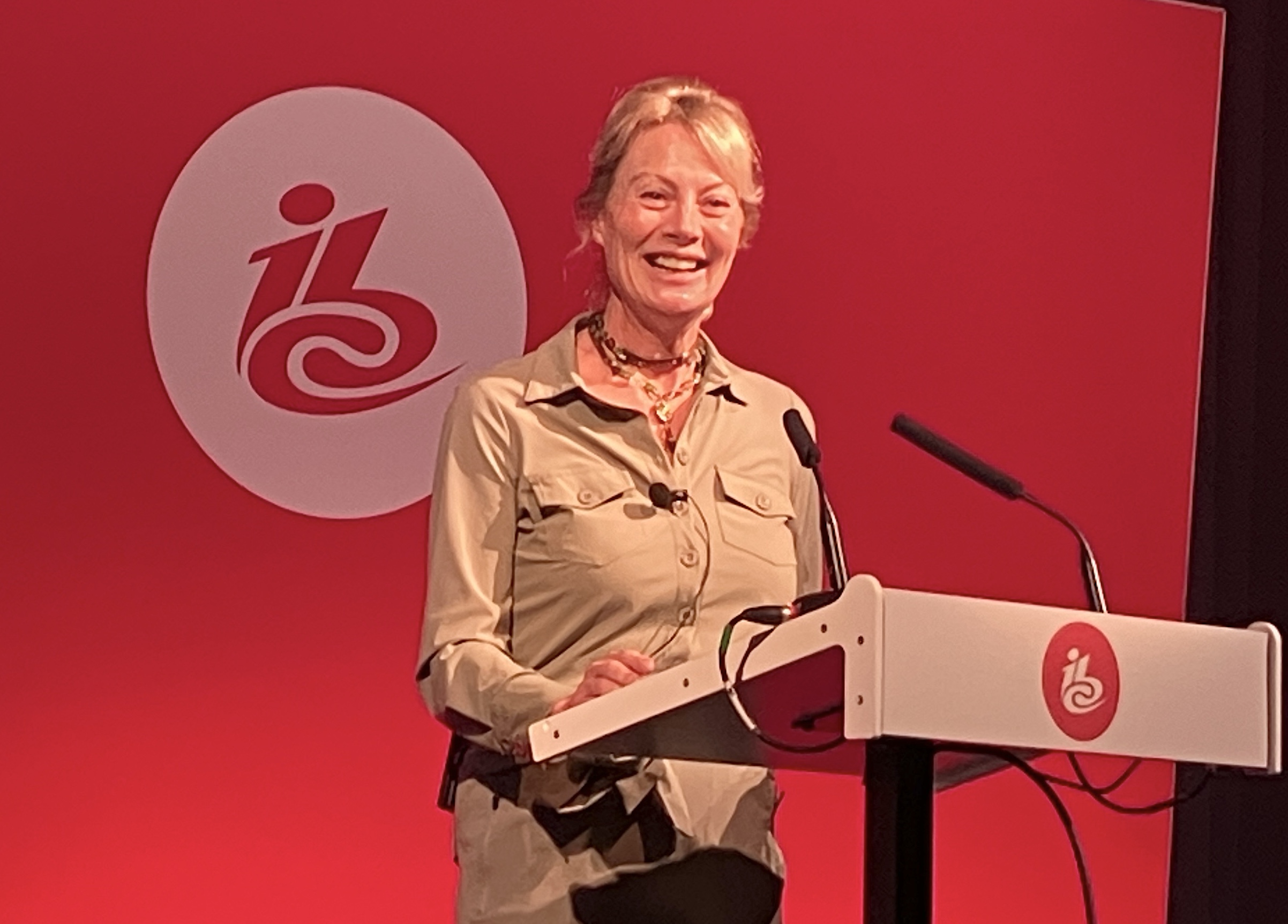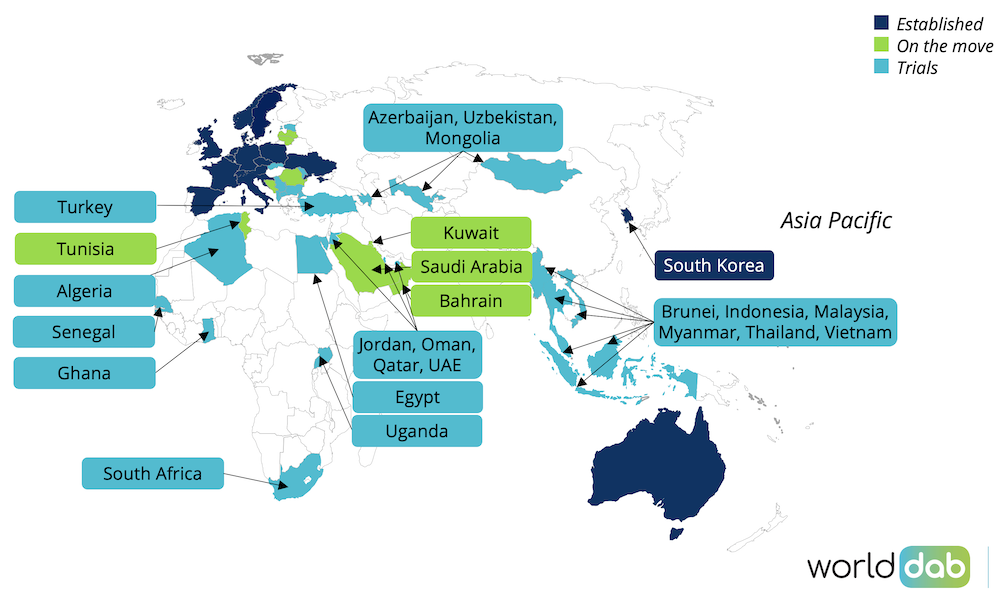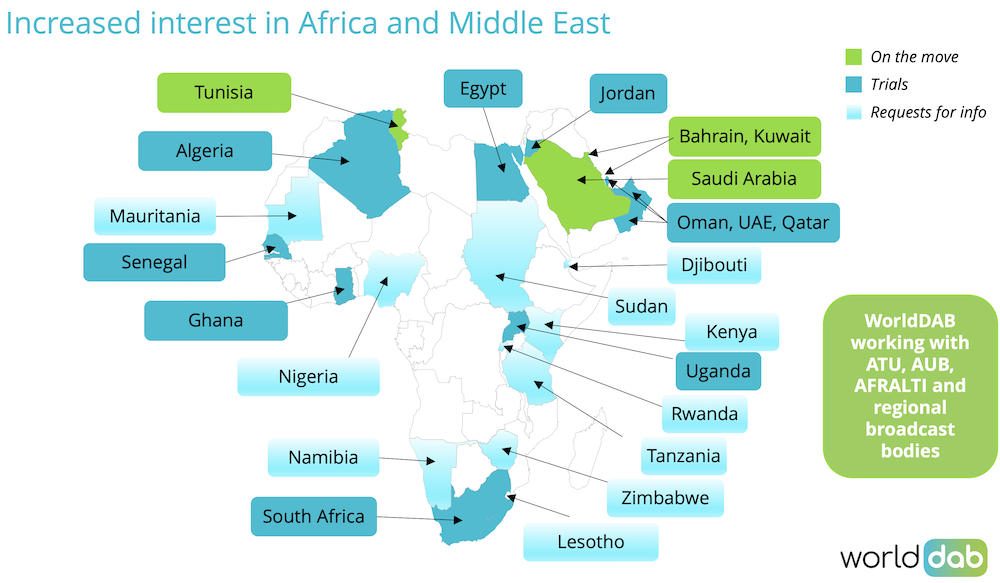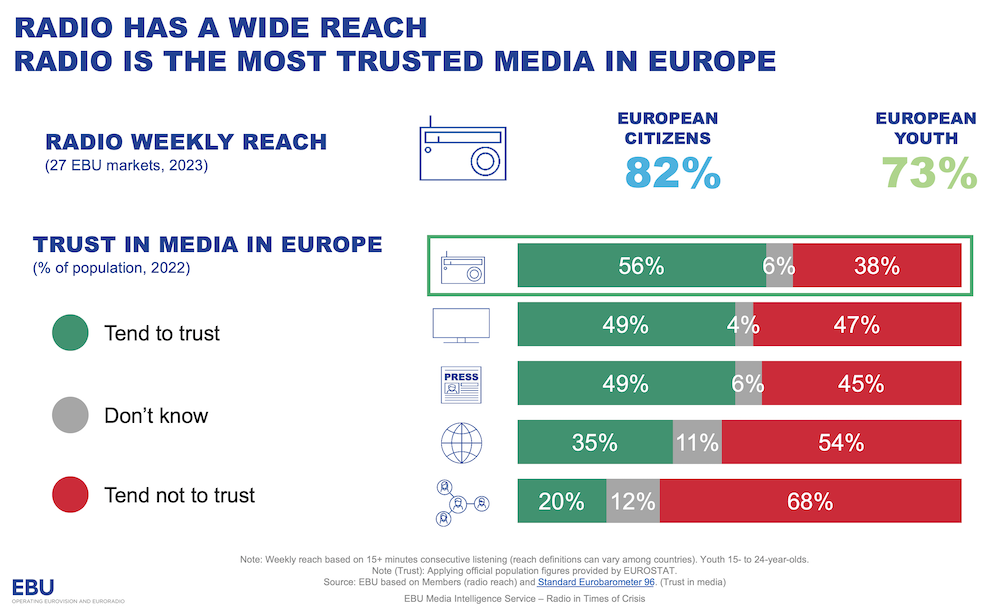WorldDAB President Jacqueline Bierhorst spoke at IBC Amsterdam this week to update broadcasters and technology suppliers on latest advances and innovations in DAB+ broadcasting in Europe and around the world.
“UK DAB share of listening is 57% in cars,” said Bierhorst. Radio is the most listened to audio platform in UK cars. “Car buyers expect broadcast radio to be standard in their next new car,” she said, quoting research conducted by WorldDAB.
“Some unregulated IT tech giants think they can do radio, but then they find it is more complicated than they first imagined,” said Bierhorst, showing a picture of Elon Musk and Donald Trump trying to do a radio style interview via online streaming… it crashed. “Online radio doesn’t always work.”
The Netherlands has “50 great DAB radio stations… France has 60% population coverage, penetration in Germany is 70%,” she said.
In Africa and the Middle East there is also significant movement taking place with a series of trials.
Spain is also revitalising its DAB coverage. Xavier Hermandez from Cellnex in Spain explained that the most important reasons for the revitalisation of DAB in Spain are an increased commitment from the public broadcaster and also the mandatory inclusion of DAB in European cars.
“In Spain we are unfreezing DAB. At first it was successful and went to 50% population coverage, but then it shrank back to 20%.
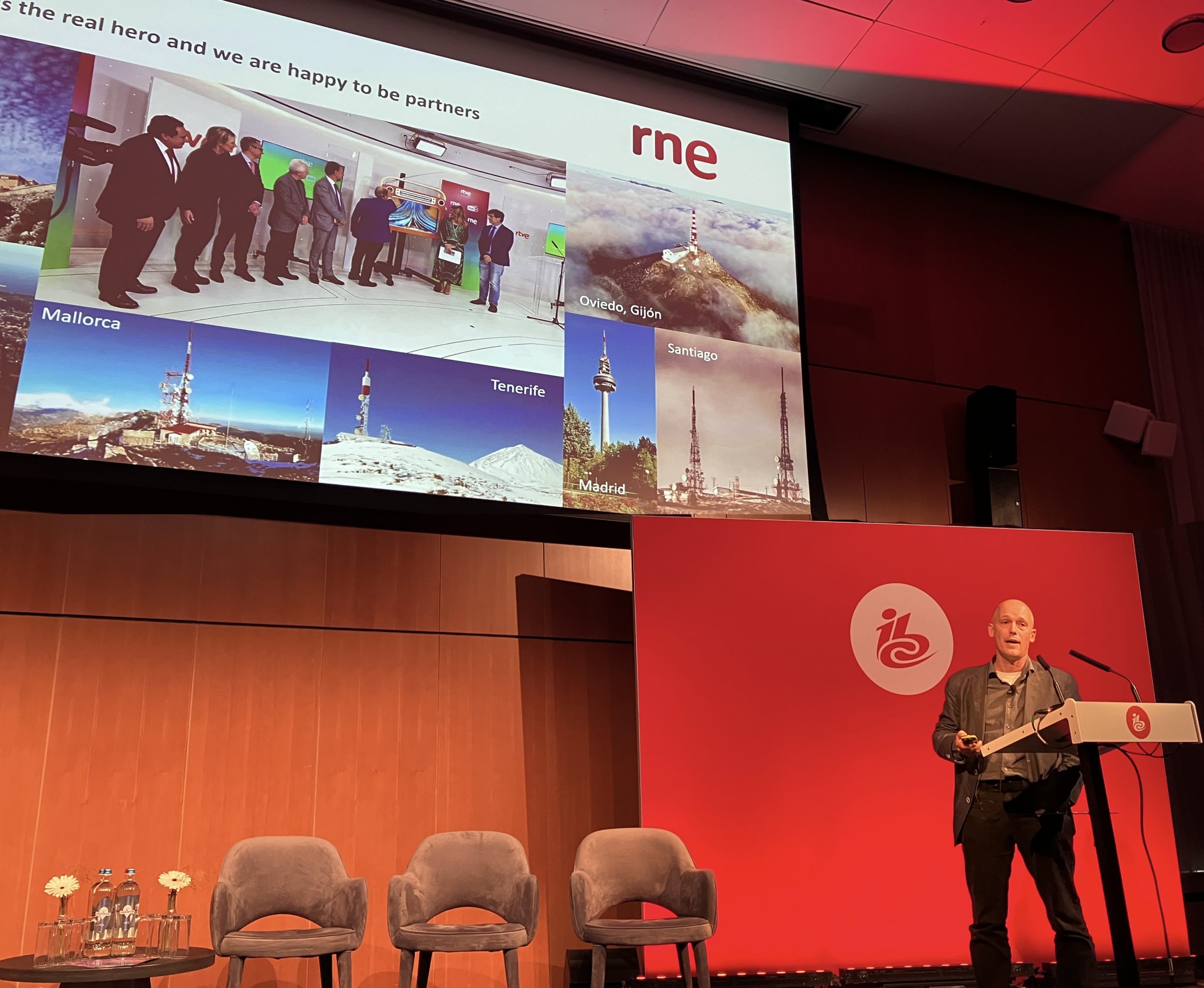
“Why is it unfreezing it now? RTVE the Spanish public broadcaster is leading the relaunch of DAB in Spain, but why now?
“The reason is because there are hundreds of receivers available now and they are compulsory in European cars. Spain has to thank the other European countries, all the cars in Spain are sold with DAB. People who buy a new car turn on the radio and get pleasantly surprised that they can get more stations… There are also now more than 400 radio receiver devices available in shops for people to buy… Tourists who drive to Spain from other parts of Europe expect to hear DAB stations.”
Also in the session, EBU media analyst Matthieu Rawolle quoted a European study of trust in media found that radio was the most trusted medium, while social media has become the least trusted medium.
DAB has also improved its alert functionality for emergencies. “Radio will work even when phones and internet go down during emergencies… Lives will be saved as a result of this work,” said Bierhorst
Lindsay Cornell, Principal Systems Architect at the BBC and Chair of the WorldDAB Technical Committee explained the new emergency warning innovations that have recently been added to the DAB broadcast standard.
“The European floods woke people up again to the importance of radio. Phones and internet went down but radio was still on air.
“We wrote a performance specification to ensure the radios would work with emergency warnings.”
Cornell explained that broadcasters who use the new EWS ASA standard can switch on DAB radios in a specific area to broadcast warning messages relevant to that geographic area, while leaving other radios elsewhere either off or on their normal chosen station. To ensure that batteries don’t run down, the radios will switch off again after a specified time, giving broadcasters certainty as to when and how long the warning messages should be.
“Broadcasters can wake up the radio and know it will be on for one minute, so they can tailor the alert content to be within that time… the emergency warning test was successful in Germany recently.”
With Sustainability now a top priority for all businesses, DAB+ is one of the most sustainable broadcast technologies, because multiple stations can share the same transmission infrastructure. A recent workshop at RadioDays Asia revealed improvements taking place in AM transmission, with a case study from ABC Radio Sydney showing a 17% reduction in power and emissions.

